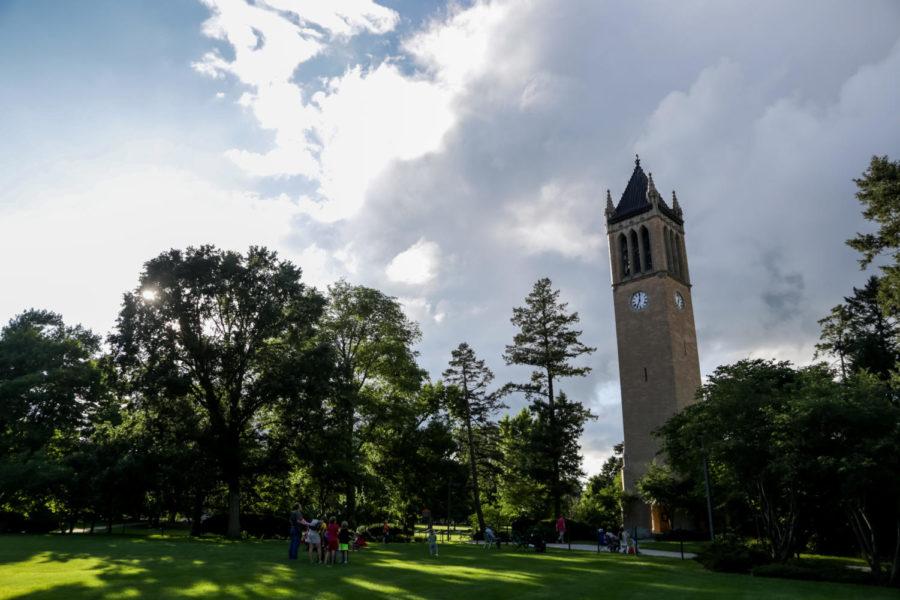Editorial: Iowa State smart to credit drop in ranking onto Iowa legislature
Mikinna Kerns/Iowa State Daily
Members of the Ames Community gather around the Campanile June 26 to listen to Mark Konewko from Milwaukee, Wisconsin play the bells. Konewko played a total of 13 songs followed by a meet and greet session where listeners were invited up into the campanile for a tour.
September 13, 2018
Earlier this week, U.S. News and World Report released a set of rankings that, at face value, lowered Iowa State’s prestige as one of the top public institutions in the nation.
Previously, Iowa State tied for 53rd among national public universities. Now, it stands at 56th. Overall — when considering all national universities — Iowa State ranks at No. 119.
Regarding specific programs, Iowa State ranked third overall for best undergraduate program in biological/agricultural engineering. The issue? Last year Iowa State ranked No. 1.
From a public relations perspective, Iowa State dropping in ranking doesn’t look, nor feel, good. The university’s role is to tout its accomplishments, not highlight its downfalls. What implications does a lower ranking have in student enrollment, retention and growth?
Does the state feel that Iowa State is worth investing in if our ranking at a national level is decreasing rather than increasing? That’s exactly the point.
Both Iowa State President Wendy Wintersteen, as well the University of Iowa President Bruce Herreld, whose university also fell in ranking, are turning the narrative toward the legislature’s lagging investment in their respective institutions.
And it’s smart.
“Adequate financial support is vital as we work to fulfill our responsibility to provide an outstanding educational experience for our students and to help meet the needs of Iowans,” Wintersteen said in a statement provided to the Iowa State Daily. “Rankings reflect the decreased investment in public higher education in Iowa.”
While years of lagging state appropriations and tuition increases are not unfamiliar to Iowa State, it shouldn’t become commonplace.
In October 1999, state appropriations made up nearly twice as much of the revenue going toward the university to what tuition and fees were contributing.
Today, those figures are flipped: Tuition up, state appropriations down.
And it’s important that Iowa State is honest about the issues it is facing. While it may serve as a deterrence for future students looking to attend the university, the long-game may be the best play.
Enrollment is finally reaching a plateau — fall 2018 marking Iowa State’s fourth largest student body in university history, 1,668 students less than 2016, and the university can no longer feel as if it is running out of space.
Iowa State can also be more honest about its growing concern regarding deferred maintenance with the university needing to fix more than $436 million in building repairs, according Facilities Planning and Management.
The university is in dire need of support, and the financial burden should not be placed solely on the shoulders of the students. By being transparent about its shortcoming and punting the fault to that of the lagging legislature funding, Iowa State can hopefully begin to change the higher education narrative.







